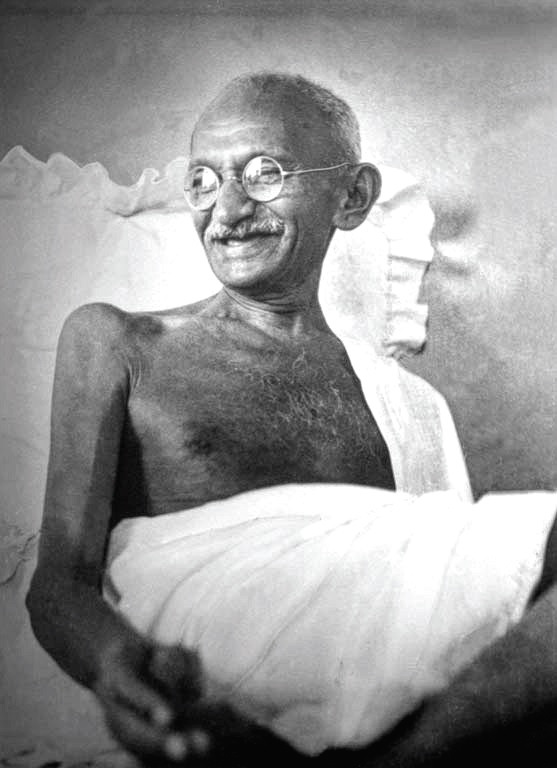
Mahatma Gandhi taught the world about peaceful protests and civil disobedience. Martin Luther King, Jr. learned about Gandhi’s methods and used them in the Civil Rights Movement.
Mahatma Gandhi was born in 1869 in India. When Gandhi grew up, he became a lawyer. But he was not very successful.
Gandhi moved to South Africa in 1893 to work for an Indian firm as a lawyer. South Africa, until the 1990s, was an apartheid state. This means that white people kept nonwhite people separate. All non-whites were considered “black” and were very unfairly treated. Gandhi himself never truly experienced this until one encounter on the train that changed him and the rest of the world forever.
Gandhi bought a first-class ticket, boarded the train, and sat down in the first-class car. Soon after, a white passenger complained. Colored people weren’t allowed in the first-class cars and had to sit in separate cars. When Gandhi refused to move, the conductor forcefully removed him from the car. This was his first act of civil disobedience. He refused to obey an unfair law. Gandhi was thrown off the train at the next stop. Not fighting back against the conductor was an act of peaceful protest.
Gandhi vowed to fight discrimination for the rest of his life. And he did. He started the Natal Indian Congress. It protested unfair laws using nonviolence and civil disobedience. Gandhi led many protests while he lived in South Africa. He went to jail several times because of this.
Gandhi returned to India in 1914. At the time, the British controlled India. They also treated non-whites unfairly. Gandhi led many peaceful protests against this treatment. Sometimes he fasted. This means that he didn’t eat for several days or even a month at a time.
In 1919, tragedy happened at a protest. British troops fired machine guns into a crowd of unarmed people killing four hundred men, women, and children. It was called the Massacre of Amristar. Afterward, Gandhi decided that the Indians should rule India, not the British.
In 1930, Gandhi led protests against Britain’s Salt Acts. These were laws that said that all Indian people had to pay taxes on salt. Gandhi organized a 240-mile march to protest the Salt Acts. The march lasted 24 days and thousands of people joined him.
The world took notice of what Mahatma Gandhi was doing in India. Time Magazine named him “Man of the Year” for 1930. Many praised his peaceful protests. Even so, the British government put Gandhi in jail many times.
Gandhi worked to make India independent. India became an independent country in 1947. A year later, Gandhi was assassinated. One million people went to his funeral.



 About BeeLine
About BeeLine